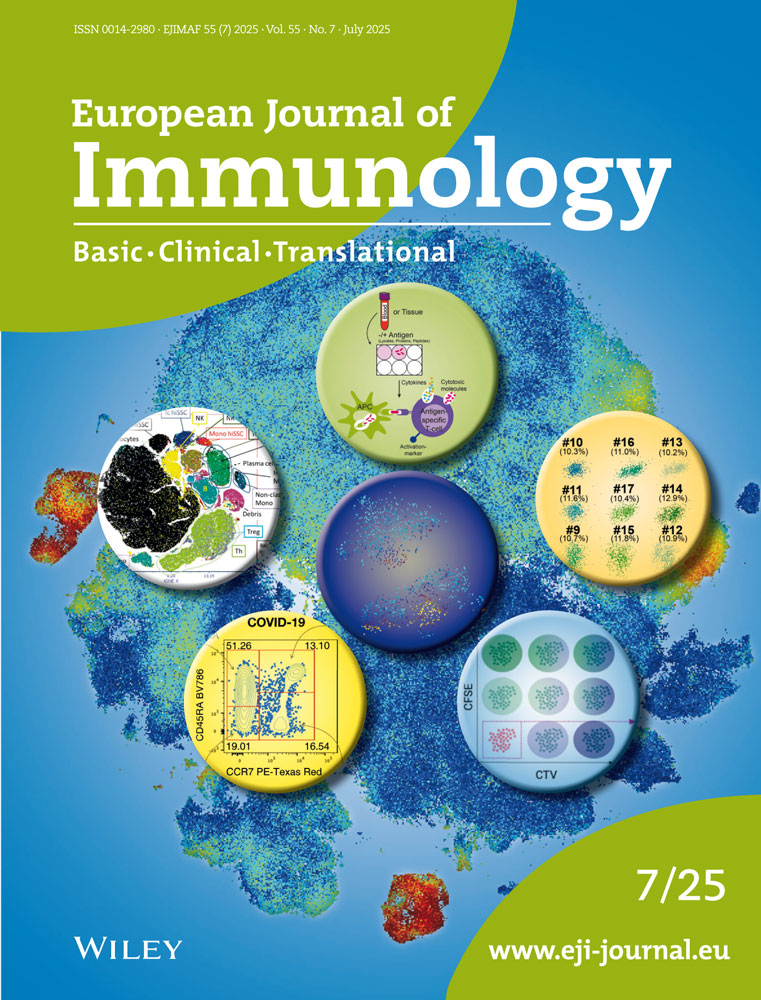Intestinal intraepithelial lymphocyte T cells are resistant to Ipr gene-induced T cell abnormalities
Abstract
The mucosal immune system of the gastrointestinal (GI) tract consists of Peyer's patches (PP), which are IgA inductive sites, and more diffuse effector regions which include cells in the intraepithelial lymphocyte (IEL) compartment. Since autoimmune MRL lpr/lpr (MRL/lpr) mice develop a proliferating CD3+, CD4−, CD8− (double negative; DN), B220+ T cell subset in systemic lymphoid tissue, we have initiated studies to determine the distribution of CD3+, DN, B220+ T cells (B220+ T cells or lpr/lpr T cells) in the GI immune system. Specifically, we examined T cell subsets separated according to expression of CD4, CD8, Thy-1, B220, α/β T cell receptor (TcR) and γ/δ TcR in PP and IEL of MRL/lpr mice at 6, 12 and 21 weeks of age. Increased numbers of CD3+ T cells were noted in both PP and spleen of 12- and 21-week-old mice in which the development of autoimmune disorders were also evident. However, normal numbers of CD3+ IEL T cells were seen in MRL/lpr mice in all three age groups tested. When the presence of T cell lymphadenopathy was examined in both IgA inductive and effector tissues, the PP followed the B220+ T cell pattern seen in the spleen, where ∼ 30%-50% of CD3+ T cells in the PP of 12- and 21-week-old MRL/lpr mice expressed the phenotype of lpr/lpr T cells and >90% were α/β TcR+. On the other hand, B220+ T cells had not developed in PP or spleen of 6-week-old MRL/lpr mice. Of interest was the finding that IEL from lpr/lpr homozygous mice did not contain B220+ T cells in any age group tested. In this regard, the IEL of MRL/lpr mice comprised an identical pattern and frequency of CD4−/CD8−, CD4+/CD8−, DN and CD4+/CD8+ (double positive, DP) T cell subsets as their normal counterparts (i.e. MRL +/+, BALB/c and C3H/HeN mice) which consisted of ∼75%, ∼7.5%, ∼7.5% and ∼10%, respectively. Further, Thy-1, γ/λ TcR and α/β TcR expression in these four subsets of MRL/lpr IEL were very similar to normal mice. These results suggest that the intestinal IEL compartment is minimally affected by the lpr/lpr mutation which induces T cell abnormalities and indicate that B220+ T cells do not preferentially home to IEL. Further, our results support the concept that IEL T cells develop as a separate T cell lineage from thymus-derived cells.




